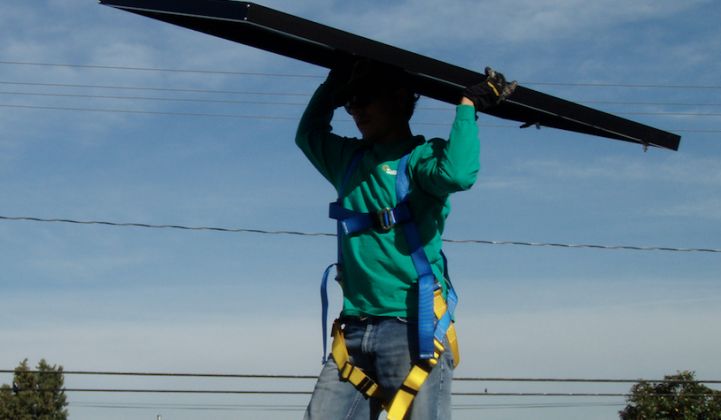As Tesla’s losses widen, and it moves ever closer to shipping its first Model 3 cars this year, the electric-car maker has another less obvious but difficult task to deal with: navigating the changing U.S. solar industry.
The company revealed some new data and goals about how it plans to transition in the solar sector during its first-quarter earnings report on Wednesday afternoon.
Many are expecting solar panel sales in the U.S. to slow or drop this year due to federal and state policy shifts. Meanwhile, the solar industry is seeing more and more homeowners who want to own their solar panels, instead of having a third party finance and own them.
SolarCity, the solar company that Tesla acquired last year, has grown into the largest solar installer in the U.S., thanks to its big business of financing and owning solar panels. But over the past couple of years, many companies have emerged to compete and offer loans for customers who want to buy and own solar panels.
As a result of these changes and SolarCity’s latest strategies to weather the ups and downs of the solar sector, Tesla said on Wednesday that it’s now focused on “selectively” deploying solar panel projects that “have higher margins and generate cash upfront.”
Tesla CEO Elon Musk said on an earnings call that solar activity is shifting to cash and loans. Tesla reported the portion of residential customers who bought rather than leased a solar system grew to 31 percent of deployments in the first quarter, up from 9 percent a year ago.
The company said that improves the cash generation of its business. But it’s clearly also what consumers want.
Tesla said it deployed 150 megawatts of solar panels in the first quarter of 2017, which was a decline compared to the same period the year prior. This quarter’s solar panel deployments were also lower than the fourth quarter of 2016, which saw 201 megawatts deployed. That amount was also a sizable miss from its guidance last year of 298 megawatts for the fourth quarter.
While Tesla is seeing some flat or declining growth in its solar panel deployments this year, it is also trying to transition the company to one that builds premium solar products paired with energy storage. The company revealed prototypes of sleek solar panels integrated into roofs last year, but there’s been a lot of industry skepticism about how much those would cost and when they would go on sale.
Musk has previously said that Tesla would start taking orders for its solar tiles in April (the month ended three days ago). However, with no solar orders in sight, Musk didn’t update listeners on that deadline on the call or in the company’s shareholders' letter on Wednesday.
Instead, Tesla offered vague descriptions of the timeline for its solar tile sales in its shareholders' letter. The company said it plans to fully staff 70 Tesla stores in the U.S. and abroad with salespeople to sell the solar panel and battery products over the next two quarters.
In addition, Tesla said it plans to start “pilot manufacturing” the solar tiles in the second quarter of this year at its Fremont factory, and “shortly thereafter” move production to its factory in Buffalo, New York. While that sounds concrete, the pilot phase of manufacturing can take awhile.
Musk was even more vague, and less ambitious, about the company’s solar tiles in a TED interview last week. He said that market saturation could take 40 to 50 years, and indicated the solar tiles are a long-term play for Tesla and not a short-term moneymaker.
The big moneymakers right now, of course, are the Model S, Model X, and the upcoming Model 3, which is expected to go into production in the summer. The company has around 400,000 reservations for that car, and will likely struggle to meet that demand within the next two years.
Solar, for now, is just a pesky market that’s turned difficult. But in the bigger scheme, selling energy generation is all a part of Musk's overall strategy to build a colossal energy company.



